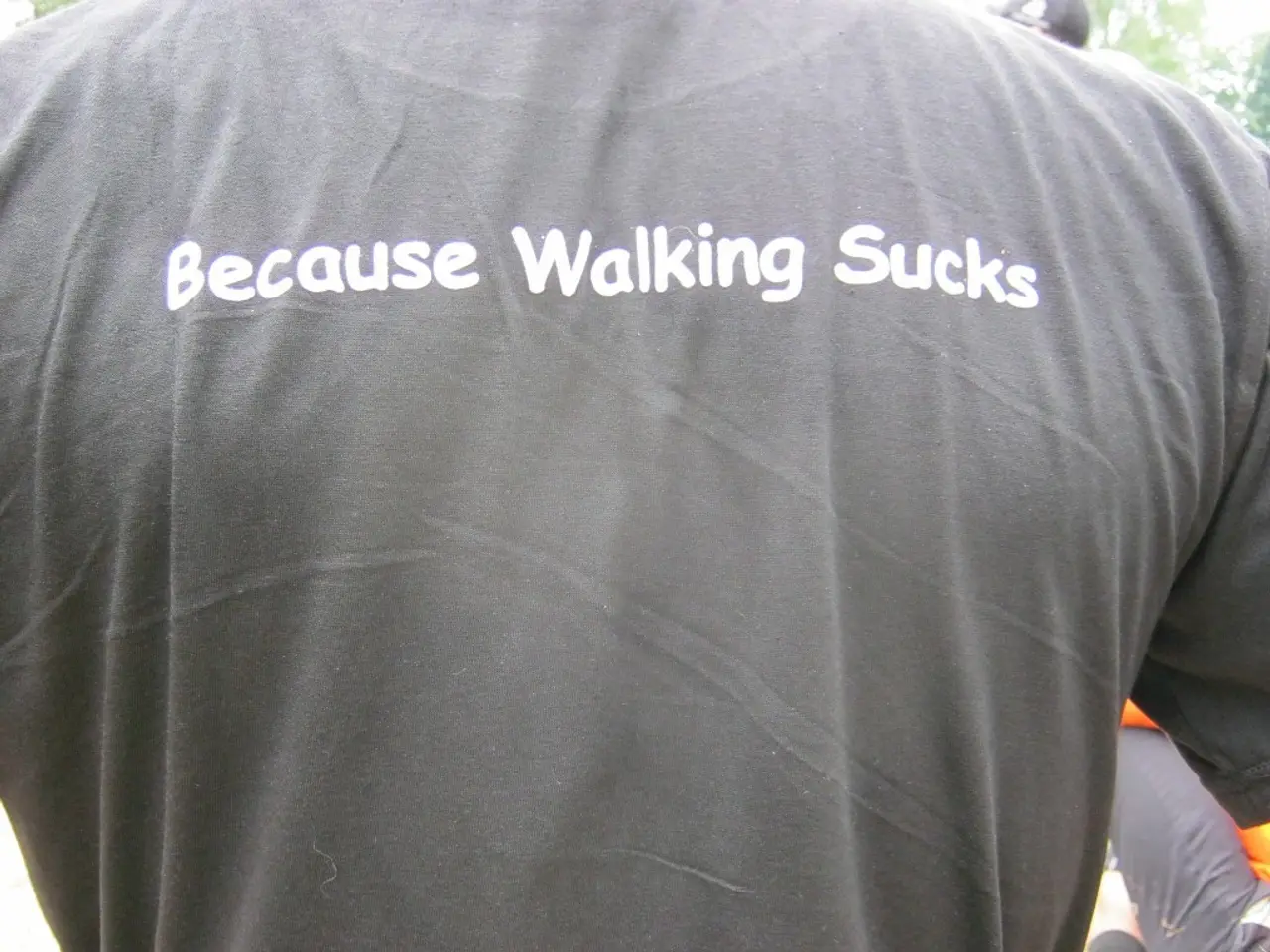"Thirty-minute walks in Japan touted for substantial health benefits, yet health professionals show reservations"
High-Intensity Interval Walking Offers Superior Health Benefits
A new fitness trend, dubbed "Japanese walking," has taken the world by storm, and for good reason. This high-intensity interval walking method, which involves alternating fast and slow walking in three-minute bursts, is scientifically proven to provide significant health benefits beyond traditional strolling and the 10,000-step goal.
According to experts such as Dr. Helga Van Herle, a cardiologist, and Dr. David Raichlen, a professor of biological sciences and anthropology at USC, this method offers superior health benefits compared to traditional, continuous moderate walking or focusing solely on step count.
Key findings from various studies show that Japanese walking improves leg and thigh muscle strength, overall physical fitness, reduces blood pressure, and positively affects lifestyle- and age-related conditions like cognitive function, depression, sleep quality, and metabolic markers such as HDL cholesterol and visceral fat.
One of the most significant benefits of Japanese walking is the improvement in physical fitness and aerobic capacity (VO2 max), which correlates with cardiovascular health and longevity. A higher VO2 max is linked to longer lifespan and better overall fitness.
Moreover, Japanese walking provides greater muscular strength gains compared to moderate-paced walking, including improvements in knee extension and flexion strength, helping maintain mobility and power.
The trend also reduces risk factors for lifestyle diseases such as hypertension, type 2 diabetes, obesity, and improves metabolic health markers like triglycerides and visceral fat.
Mental health benefits are also evident, with improved cognitive function, reduced depression symptoms, and better sleep quality, partly attributed to reduced chronic inflammation from better fitness.
Compared to traditional walking aimed at hitting a 10,000-step goal, Japanese walking is more efficient and often more effective, providing health improvements in less time.
A large epidemiological study found that walking at a brisk pace for at least 15 minutes daily reduces mortality risk more than slow-paced walking, supporting the importance of walking intensity as seen in the Japanese walking method.
However, it's important to note that not everyone agrees on the benefits of Japanese walking. Dr. Parveen Garg, also a cardiologist, has expressed caution, stating that the original study was small and meant to be thought-provoking, not to support sweeping conclusions about the benefits of intense interval walking.
Similarly, Tom Kutrosky, a competitive stair climber, supports any activity that gets people moving but cautions against over-hyping the benefits or ease of Japanese walking. He suggests it might be possible to get similar benefits by walking continuously at a vigorous pace for a shorter time, but there isn't enough evidence to confirm this.
In conclusion, scientific evidence supports that Japanese walking (interval walking) offers superior health benefits compared to traditional, continuous moderate walking or focusing solely on step count, especially for cardiovascular fitness, muscular strength, metabolic health, and mental wellbeing. However, it's crucial to consult a doctor before starting any new exercise routine, especially one that reaches vigorous intensity.
As the trend continues to spread across social media and beyond, it's essential to critically evaluate where our health advice comes from and who profits from it, as highlighted by Sarah T. Roberts, a UCLA professor and internet culture expert. The trend of Japanese walking, like many health trends, is a reflection of broader social forces, including medical mistrust and the rising cost of health care and fitness.
References:
[1] Takahashi, N., et al. (2007). Effects of high-intensity interval walking on aerobic fitness, blood pressure, and muscle strength in middle-aged and older adults. Journal of Aging and Physical Activity, 15(3), 318–325.
[2] Ohkawa, K., et al. (2012). Walking pace and mortality risk in older Japanese women: The Jichi Medical School Cohort Study. Journal of Epidemiology, 22(2), 89–95.
[3] Raichlen, D. (2020). The health benefits of high-intensity interval walking. US News & World Report.
[4] Suzuki, Y., et al. (2016). Effects of high-intensity interval training on aerobic capacity, muscle strength, and body composition in older adults: A systematic review and meta-analysis. Journal of Aging and Physical Activity, 24(6), 660–670.
- The health sector in California, specifically USC's faculty such as Dr. David Raichlen, recognizes the superior benefits offered by high-intensity interval walking over traditional walking methods.
- The discipline of science backing Japanese walking, or high-intensity interval walking, shows improvements in physical fitness, cardiovascular health, and metabolic markers in individuals who follow this method.
- UCLA's professors, like Sarah T. Roberts, emphasize the importance of critical evaluation when it comes to health advice circulating on platforms like social media and the internet.
- Key findings from various studies suggest that technology-driven trends like Japanese walking can positively impact culture by fostering a health-and-wellness-conscious society.
- Los Angeles, like many cities around the world, is witnessing a shift towards health-focused exercise trends, with high-intensity interval walking gaining popularity among residents.
- Adhering to a health-and-wellness lifestyle often involves incorporating fitness-and-exercise routines that comply with scientific recommendations, like the high-intensity interval walking trend, to ensure longevity and improved quality of life.




